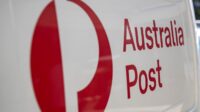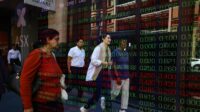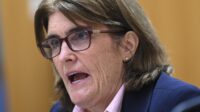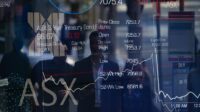[ad_1]
A leading economist has warned that Australia is among the countries at risk of recession in 2024 after brutal interest rate rises.
AMP deputy chief economist Diana Mousina said there was a 40 per cent risk of recession in Australia after one of the most intense cycles of rate rises by the Reserve Bank of Australia (RBA).
The RBA has chosen to increase the cash rate 13 times in the past 19 months, taking interest rates from record lows of 0.10 per cent to 4.35 per cent in record time.
The RBA was pushed to increase rates amid soaring inflation, pushing up costs for homeowners and businesses in a bid to keep prices down.
“Usually, whenever we get a very significant increase to interest rates, just like we’ve had right now, there is some sort of reckoning – a day of reckoning – or some sort of crisis that eventuates through that,” she told a recent AMP webinar.
Ms Mousina pointed towards the recent closure of banks in the US in March as well as historical data that shows tightening by the Federal Reserve often leads to crisis.
“This year we had the US banking crisis, which occurred in March. You could say that maybe that was the crisis that eventuated with this tightening cycle, but I find it hard to believe that it will just end with that,” she argued.
“I think that we will see some other sort of … whether it’s a mini crisis or some sort of more significant economic downturn in 2024.”
With economic headwinds incoming in the new year, Ms Mousina said people could expect softer global growth or a recession in the coming months.
“Hopefully, it’s a mild recession because there are still some positive savings buffers that consumers have, which could shield the consumer from a downturn, but it is still a risk for next year,” she said.
Ms Mousina spoke of the similarities between today and the recession of the early 1990s.
“The RBA kept increasing the cash rate – everything looked OK. The unemployment rate fell quite significantly and then the unemployment rate started rising very, very quickly again as we went into that recession and the RBA cut rates quickly,” she said.
“Things can seem OK when they’re not, which is why financial markets are still pricing in a decent chance for a recession.”
Australia has recently enjoyed a period of historically low unemployment, with the rate remaining at 3.8 per cent in November 2023.
It fell as low as 3.4 per cent in 2022 after the Covid-19 pandemic caused unemployment to spike to 7.5 per cent in 2020.
Despite many Australians being employed, the high cost of living caused by inflation has meant that many are struggling.
Inflation was at its highest in December 2022 at 7.8 per cent, with costs still remaining high in the most recent figures at 5.4 per cent, according to the Australian Bureau of Statistics.
Economists consider an inflation rate of between 2 and 3 per cent as the ideal measure of price growth.
[ad_2]







